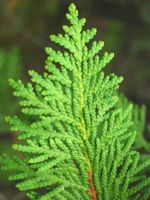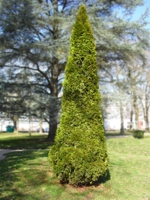Mon-Fri 9am - 5pm Mountain time
Skybound Cedar vs Emerald Cedar
Thuja occidentalis Skybound
Thuja occidentalis Smaragd
NOT AVAILABLE THIS SEASON - MIGHT RETURN
NOT AVAILABLE THIS SEASON - MIGHT RETURN
The Skybound Cedar is a newer variety that is usually hardier than the Brandon Cedar and richer in color. The dark green, scale-like foliage maintain their needles and color throughout the winter.
Cedars enjoy average to moist soil conditions and should not be allowed to dry out. It's small size, spread and columnar shape make the Skybound Cedar an excellent accent tree or border hedge that can be expected to live up to 50 years under ideal conditions.
Emerald Cedar makes a great addition to landscapes, and is often used to form tight hedges or privacy screens. The thick scale-like foliage adds texture and colour to yards and is commonly used to line driveways. Unlike other cedars it retains its green colour throughout the fall and winter.
It is a semi dwarf species, which generally needs little pruning, but if desired it responds well to trimming. Its attractive, columnar shape and dense foliage makes it a desired landscape feature.
The Emerald Cedar won the award of merit from the Royal Horticultural Society.

